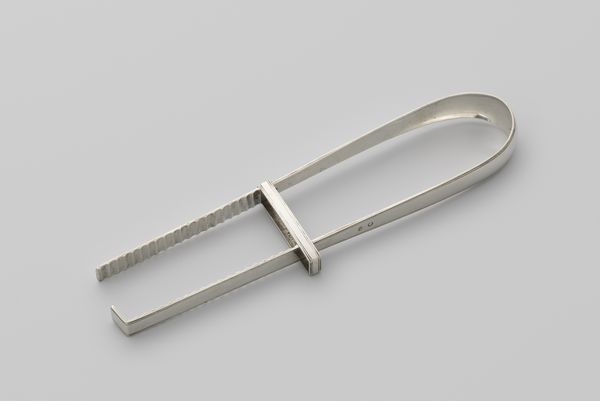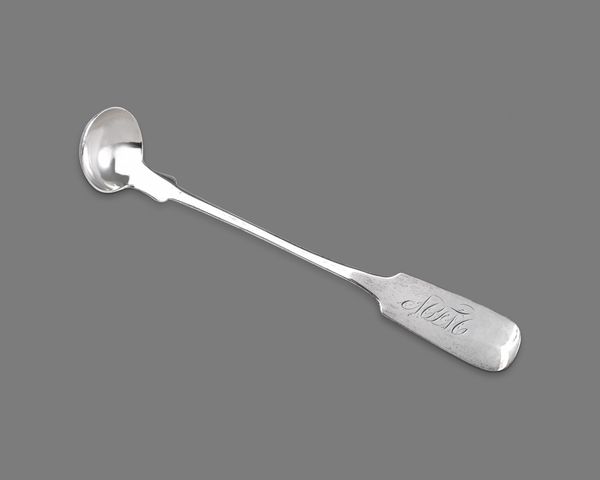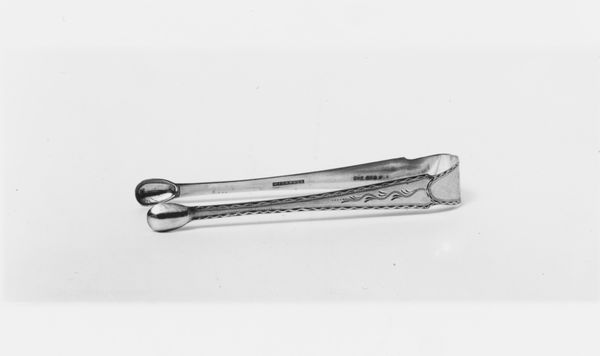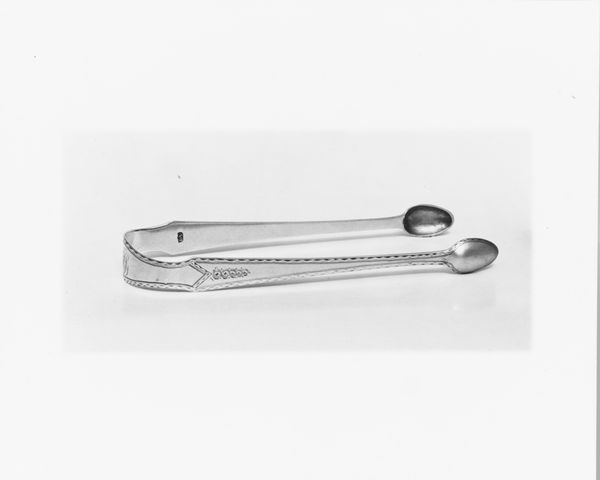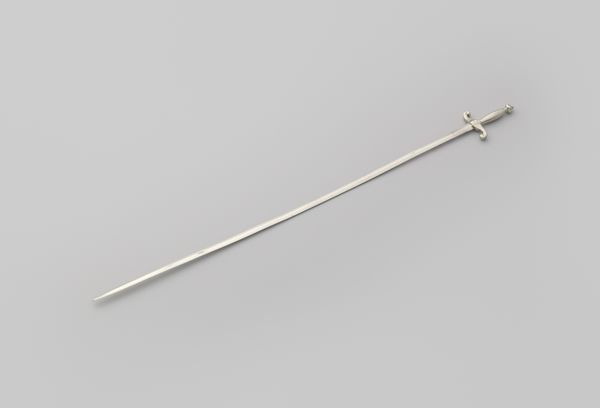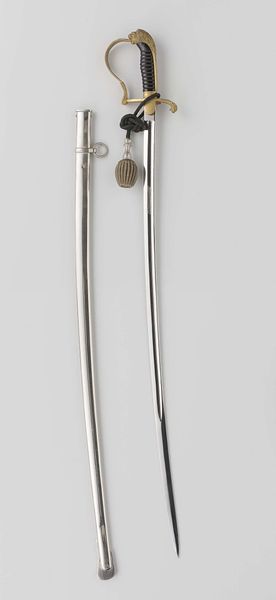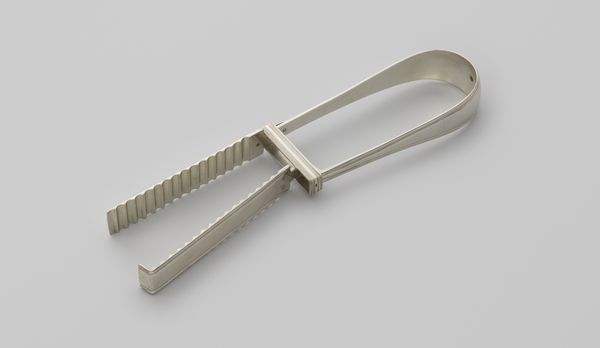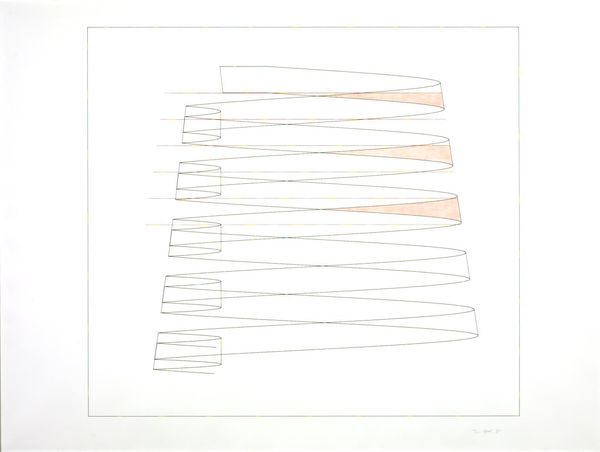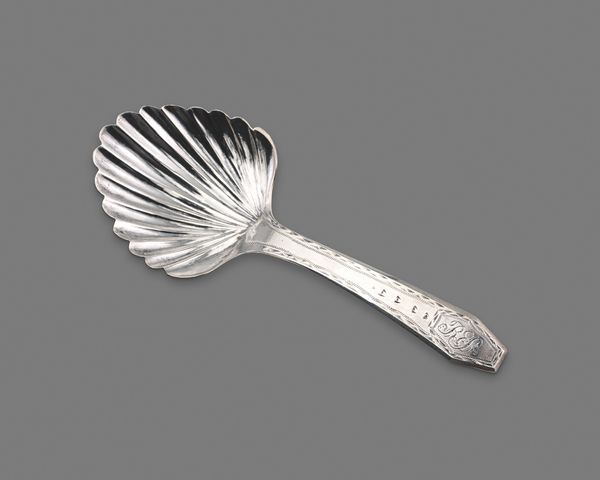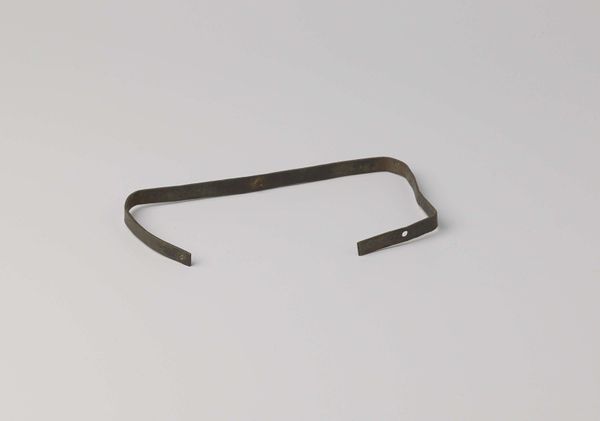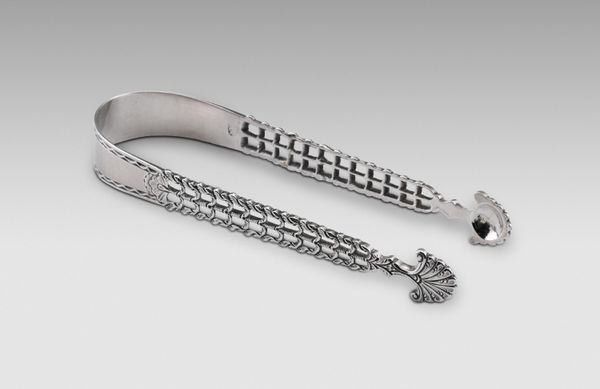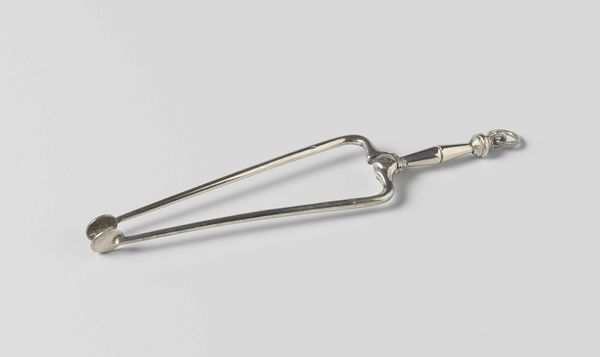
silver, metal, sculpture, ivory
silver
metal
sculpture
decorative-art
ivory
Dimensions: 7 × 10.9 cm (2 7/8 × 4 1/4 in.)
Copyright: Public Domain
Curator: This "Comb," crafted between 1828 and 1850, is currently held in the collection of the Art Institute of Chicago. It is the work of William D. Rapp and appears to be composed of silver and ivory. Editor: It's strikingly elegant! The reflective silver and the graceful curves... it's difficult to believe such a utilitarian object could also be a miniature sculpture. Curator: Absolutely. And let's consider the societal implications. During the 19th century, objects like these were often signs of wealth, made possible by industrialized production that made previously rare materials, such as silver, more accessible to a burgeoning middle class. Editor: That engraving of floral elements adds an extra layer of sophistication. One imagines the artisan who crafted it, painstakingly working the metal. Do you know anything about the process, how something like this was made? Curator: It's most likely die-stamped with hand-finishing, though precise documentation is proving hard to trace. What's interesting is thinking about the consumer of this object. Editor: It seems meant to be seen, an expression of status made by the craft involved and, as you say, the access to costly materials. It makes me wonder about what hairstyles were in fashion then, what rituals of grooming surrounded an object such as this. Curator: It would likely be a highly stylized coiffure, typical of the Romantic Era, requiring daily manipulation and upkeep—certainly the province of ladies of leisure with assistance available from servants, and the growing beauty sector in big cities. So, we have the object, the socio-economic factors of its making and use, and then the context of who actually came into contact with and owned it. Editor: Thinking of that era of burgeoning cities and their fashion gives the comb a vibrant context beyond just personal adornment, bringing in ideas of social stratification and evolving craft processes. It offers more questions than answers. Curator: Exactly. These details, whether of process or historical fact, enrich our appreciation of this small, silvery piece. Thank you for noticing its impact on you, the listener, so immediately. Editor: Thank you.
Comments
No comments
Be the first to comment and join the conversation on the ultimate creative platform.

